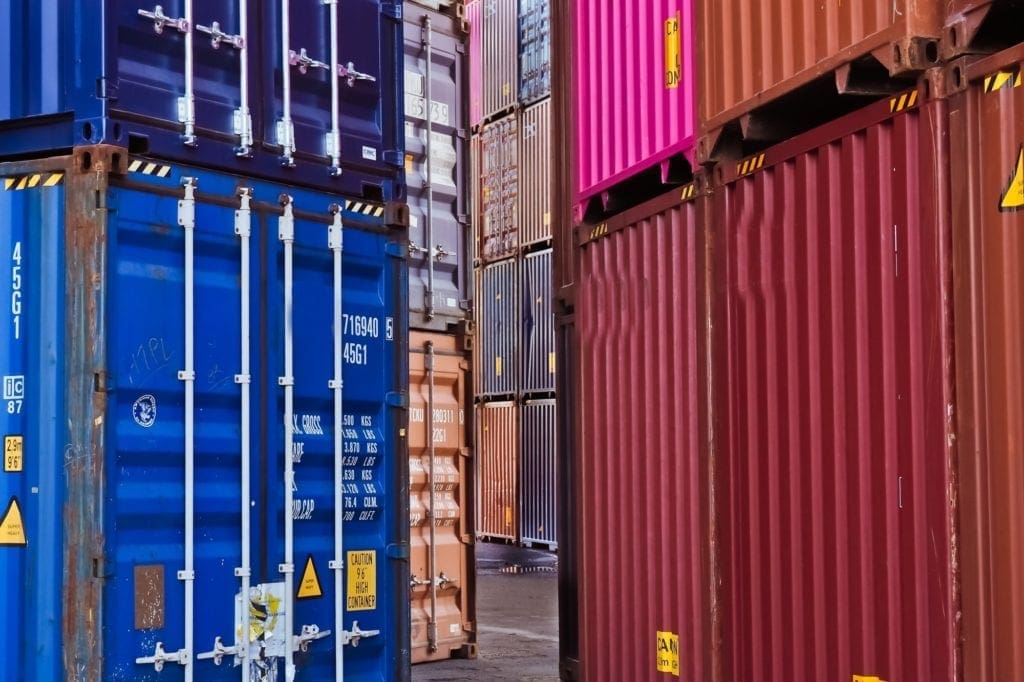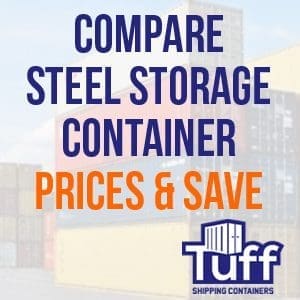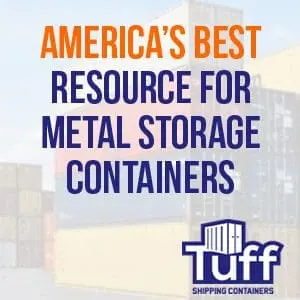
Top 10 Overlooked Shipping Container Benefits in 2023
Shipping containers have become increasingly popular in various industries, thanks to their versatility, durability, and cost-effectiveness. While many people are aware of the basic benefits of using shipping containers for storage or as makeshift structures, there are several additional advantages that often go overlooked. In this blog, we will explore the top 10 overlooked shipping container benefits in 2023.
1. Eco-Friendly Construction
Using repurposed shipping containers for construction projects promotes sustainability by giving new life to these steel structures that would otherwise go to waste.
2. Mobility and Flexibility
Shipping containers are designed to be transported easily. They can be transported by truck, rail, or ship, making them ideal for mobile structures or projects that require frequent relocation.
3. Cost Savings
Compared to traditional construction methods, using shipping containers can result in significant cost savings. The containers are readily available and require minimal modification, reducing both material and labor costs.
4. Quick Construction
Shipping container structures can be built relatively quickly, reducing construction time and allowing for faster project completion. This is especially beneficial for businesses or organizations with tight deadlines.
5. Modularity and Expandability
Shipping containers are designed to be stackable and modular, allowing for easy expansion or downsizing as needed. This makes them highly adaptable for different applications, such as office spaces, retail shops, or housing complexes.
6. Durability and Security
Shipping containers are built to withstand harsh conditions at sea, making them incredibly durable. They are also secure and can be modified to include features like reinforced doors, security systems, and windows for added protection.
7. Creative Design Possibilities
Shipping containers offer endless design possibilities, allowing for unique and innovative architectural designs. With a touch of creativity, they can be transformed into aesthetically appealing and functional spaces.
8. Scalability
Shipping container structures can be easily scaled up or down to accommodate changing needs. Additional containers can be added to increase the available space, making it a scalable solution for growing businesses or evolving projects.
9. Versatile Applications
Shipping containers can be used for a wide range of applications, including retail stores, pop-up shops, restaurants, art galleries, workshops, and even emergency shelters. The versatility of shipping container structures is often underestimated.
10. Portability
Shipping containers can be easily transported to remote or inaccessible locations, making them ideal for projects in challenging environments or areas with limited resources.
These overlooked benefits of shipping containers highlight their potential in various industries and applications. Whether you’re considering using shipping containers for construction, storage, or temporary structures, it’s important to explore the full range of benefits they offer. By harnessing their versatility, cost-effectiveness, and sustainability, you can make the most of shipping containers and unlock their potential for your next project.



What Can Shipping Containers be Used for?
Shipping containers have evolved beyond their original purpose of transporting goods across the globe. Their durable and versatile nature makes them suitable for various applications. Here are some popular uses for shipping containers:
- Shipping Container Homes: Shipping containers can be converted into unique and sustainable living spaces. With proper insulation, plumbing, and electrical installations, shipping container homes offer a cost-effective and eco-friendly housing solution.
- Storage Solutions: Shipping containers make excellent storage units. Whether you need additional storage space for personal belongings, equipment, or inventory, shipping containers provide a secure and weather-resistant storage solution.
- Office Space: Shipping containers can be transformed into comfortable and functional office spaces. They offer a flexible and cost-efficient alternative to traditional office buildings, making them ideal for startups, remote worksites, or temporary office spaces.
- Pop-up Shops and Retail Spaces: Shipping containers are a popular choice for pop-up shops, retail spaces, and food stalls. They can be easily modified to create eye-catching and customizable retail environments, allowing businesses to set up temporary or permanent locations quickly.
- Workshops and Studios: Shipping containers provide practical and affordable spaces for workshops, studios, and creative spaces. Their portability and customizable features make them ideal for artists, craftsmen, and entrepreneurs looking for dedicated workspaces.
- Remote Locations and Off-Grid Living: Shipping containers can be transported to remote or off-grid locations, providing shelter and accommodation. They are often used for research stations, mining camps, or as temporary housing in areas with limited infrastructure.
- Event Spaces and Exhibition Centers: Shipping containers are used to create unique event spaces and exhibition centers. They offer a modern and innovative environment for trade shows, art exhibits, and interactive installations.
- Emergency Shelters and Disaster Relief: In times of natural disasters or emergencies, shipping containers can be quickly deployed as emergency shelters or medical facilities. They provide a sturdy and secure structure that can be readily adapted to meet immediate needs.
- Modular Buildings and Extensions: Multiple shipping containers can be stacked or combined to create larger structures, such as multi-story buildings, educational facilities, or community centers. This modular approach allows for flexible and scalable construction solutions.
- Transportation and Mobile Businesses: Shipping containers can be converted into mobile businesses, such as food trucks, mobile clinics, or portable offices. Their mobility and compact size make them suitable for businesses that need to move frequently or operate in different locations.
The versatility of shipping containers makes them valuable assets for a wide range of applications. From residential homes to commercial spaces, storage solutions to pop-up shops, shipping containers offer practicality, durability, and cost-effectiveness. With proper planning and customization, these repurposed containers can provide unique and functional spaces for various needs.
The Environmental Benefits of Shipping Containers
Shipping containers offer several environmental benefits due to their inherent characteristics and the sustainable practices associated with their use. Here are some of the environmental advantages of shipping containers:
Reuse and Recycling
Shipping containers are built to withstand harsh marine environments, making them durable and long-lasting. By repurposing these containers, we extend their lifespan and reduce the demand for new construction materials. This helps to conserve resources and minimize waste.
Reduced Construction Waste
When shipping containers are converted into buildings or structures, the amount of construction waste generated is significantly reduced compared to traditional construction methods. By using existing containers as the main structural components, the need for extensive raw materials, such as concrete and lumber, is minimized.
Energy Efficiency
Shipping containers are made from steel, which is a highly energy-efficient material. Steel has excellent insulating properties, allowing for better temperature regulation within the container. This can reduce the energy required for heating or cooling the space, leading to lower energy consumption and associated greenhouse gas emissions.
Modularity and Scalability
The modular nature of shipping containers allows for easy expansion and modification of structures. This eliminates the need for large-scale demolition and reconstruction, which can have a significant environmental impact. Containers can be added or removed as needed, providing a flexible and adaptable solution that reduces construction waste.
Minimal Site Disturbance
Shipping containers can be delivered and installed on-site with minimal disruption to the surrounding environment. Unlike traditional construction, which often requires extensive excavation and site preparation, containers can be placed on a level surface, reducing soil disturbance and preserving natural landscapes.
Water Conservation
Shipping containers can be equipped with water collection and filtration systems to promote water conservation. Rainwater harvesting techniques can be employed to capture and utilize water for various purposes, such as irrigation or flushing toilets. This reduces reliance on traditional water sources and promotes sustainable water management practices.
Eco-friendly Insulation and Finishes
When converting shipping containers into habitable spaces, eco-friendly insulation materials and finishes can be used. These materials are often made from recycled or sustainable sources and have minimal impact on indoor air quality. Additionally, energy-efficient windows and doors can be installed to enhance thermal performance and reduce the need for artificial lighting.
Mobility and Reusability
Shipping containers can be easily transported and repurposed, allowing for their use in multiple locations over time. This mobility and reusability contribute to a more efficient use of resources and minimize the need for new construction. It also reduces the carbon footprint associated with traditional building materials and construction practices.
By repurposing shipping containers, we can harness their sustainable qualities and contribute to environmental conservation. From reducing construction waste to promoting energy efficiency and resource conservation, shipping containers offer an eco-friendly alternative to traditional construction methods. Their adaptability and durability make them a compelling option for those seeking sustainable and environmentally conscious building solutions.



Your Guide to Shipping Container Homes
If you’re considering building a home using shipping containers, here is a comprehensive guide to help you navigate the process and make informed decisions that meet your specific needs:
- Design and Planning: Determine the size and layout of your shipping container home based on your space requirements and desired functionality. Consider the number of containers needed and their arrangement to create the desired living spaces.
- Container Selection: Choose high-quality shipping containers that are structurally sound and in good condition. Opt for new containers whenever possible, as they provide a cleaner and more durable starting point for your project.
- Permits and Regulations: Check with your local building department to understand the specific requirements and permits needed for constructing a shipping container home in your area. Ensure compliance with building codes, zoning regulations, and any restrictions related to residential use.
- Foundation: Determine the appropriate foundation type for your shipping container home. Options include concrete slabs, piers, or a combination of both. Consider the soil conditions, climate, and local building codes when selecting the foundation system.
- Insulation and Climate Control: Proper insulation is crucial to ensure comfort and energy efficiency in your shipping container home. Explore different insulation options such as spray foam, rigid foam boards, or natural fiber insulation. Install climate control systems, such as HVAC units, to maintain a comfortable indoor environment.
- Structural Modifications: Plan and execute necessary structural modifications to accommodate doors, windows, and openings for plumbing and electrical installations. Work with a professional contractor experienced in working with shipping containers to ensure structural integrity.
- Utilities and Services: Connect your shipping container home to essential utilities such as water, electricity, and sewer systems. Ensure proper plumbing and electrical work to meet building codes and safety standards. Consider renewable energy options like solar panels to reduce your reliance on the grid.
- Interior Design and Finishes: Personalize your shipping container home with interior design choices that reflect your style and preferences. Consider the use of sustainable and eco-friendly materials for flooring, cabinetry, and finishes. Optimize space utilization with smart storage solutions and functional furniture.
- Safety and Security: Install appropriate security measures to protect your shipping container home. Reinforce doors and windows with security features and consider installing an alarm system for added safety.
- Landscaping and Outdoor Spaces: Enhance the aesthetics and functionality of your shipping container home with well-designed landscaping and outdoor areas. Create outdoor living spaces, gardens, or patios that complement the overall design and provide opportunities for relaxation and enjoyment.
Building a shipping container home requires careful planning, attention to detail, and adherence to building codes and regulations. Consulting with professionals, such as architects and contractors experienced in container home construction, can provide valuable guidance throughout the process.
Remember, each shipping container home is unique, and customization options are endless. Whether you’re looking for a compact and sustainable living space or a larger, multi-container dwelling, a shipping container home can offer an innovative, affordable, and environmentally friendly solution that meets your specific needs.
Shipping Container Benefits for Business Owners
Shipping containers offer numerous advantages for business owners looking for cost-effective and versatile solutions. Here are some key benefits of using shipping containers for business purposes:
Affordability
Purchasing a new container or using steel shipping containers can be a cost-effective alternative to traditional construction methods. The initial cost of a container is typically lower compared to building a permanent structure, making it an attractive option for small businesses or startups with limited budgets.
Versatility
Shipping containers can be customized and adapted to various business needs. They can serve as job site offices, storage facilities, pop-up shops, mobile workshops, or even complete business premises. Their modular nature allows for easy expansion or relocation as your business evolves.
Mobility
Shipping containers are designed for transportation, making them inherently mobile. This mobility allows you to move your business quickly and easily to new locations, whether it’s for temporary projects or to cater to changing market demands. Portable shipping container offices can be set up on-site, providing immediate workspace solutions.
Durability and Security
Built from high-quality steel, shipping containers are built to withstand harsh weather conditions and offer excellent security. They are designed to protect valuable cargo during transportation, making them inherently robust and secure structures. This durability ensures that your business assets and inventory are well-protected.
Quick Setup and Expansion
Compared to traditional construction, setting up a shipping container office or business space is relatively quick and straightforward. Once delivered to your desired location, containers can be easily modified to include doors, windows, insulation, electrical wiring, and plumbing. You can also stack or connect containers to create larger spaces or multiple levels for expanded business operations.
Sustainability
Utilizing shipping containers for your business aligns with sustainable practices. By repurposing these containers, you contribute to the recycling and reusing of materials, reducing construction waste. Additionally, shipping containers can be outfitted with eco-friendly features like solar panels, rainwater harvesting systems, and energy-efficient insulation, promoting environmental responsibility.
Portability and Scalability
As your business grows or changes, shipping containers provide a scalable solution. You can easily add or remove containers based on your evolving space requirements. This scalability allows for flexibility and cost-efficiency, ensuring that your workspace adapts to your business needs.
Brand Visibility and Marketing
Utilizing a shipping container as a pop-up shop or mobile office can create a unique and eye-catching brand presence. The distinctive appearance of shipping containers can attract attention, generating curiosity and interest among potential customers. With creative branding and design, your container-based business can stand out in various locations and events.
Temporary or Seasonal Use
Shipping containers are particularly useful for businesses with temporary or seasonal operations. Whether it’s a construction site office, a pop-up retail store during holidays, or a mobile food truck for festivals, containers provide a practical and affordable solution for short-term business ventures.
Minimal Disruption
When using shipping containers for business purposes, there is minimal disruption to the surrounding environment. Unlike traditional construction, which often involves significant site preparation and disruption, shipping containers can be installed quickly without causing extensive disturbances to the area.


By leveraging the benefits of shipping containers, business owners can create functional, cost-effective, and customizable spaces for their operations. Whether you need a temporary office, a portable retail space, or a mobile workshop, shipping containers offer a flexible and adaptable solution to support your business goals.
What Materials Are Shipping Containers Made From?
Shipping containers are typically made from high-quality steel, specifically corten steel (a type of weathering steel). Corten steel is known for its exceptional strength, durability, and resistance to corrosion. It contains copper, chromium, nickel, and other elements that enhance its ability to withstand harsh weather conditions, including heavy rain, wind, and saltwater exposure.
The walls, roof, and floor of a shipping container are constructed using corrugated steel panels. These panels are rigid and provide structural integrity to the container. The corrugations, or grooves, in the steel panels enhance the container’s strength and ability to withstand stacking and transportation.
Why Use Steel?
The steel used in shipping containers is chosen for its longevity and ability to withstand the stresses of transportation and handling. It ensures that the container can withstand rough handling during loading and unloading processes, as well as the dynamic forces experienced during transport on trucks, trains, or ships.
In addition to the steel components, shipping containers may feature other materials, such as plywood flooring and insulation. The plywood flooring provides a sturdy and smooth surface for loading and unloading cargo. Insulation materials, such as foam or fiberglass, can be added to the interior walls or roof to provide thermal insulation and temperature control for specific applications.
The use of steel in shipping container construction ensures the structural integrity, security, and longevity of the containers. It allows them to withstand the rigors of transportation, protect valuable goods, and provide a reliable solution for various business and industrial needs.
Breaking Down the Cost of Shipping Containers
When considering shipping containers, you have the option to choose between buying new or used containers. Each option has its own set of advantages and considerations. Let’s explore the differences and factors to consider when deciding between new and used shipping containers:
Cost:
- New Containers: The cost of a new shipping container can vary depending on factors such as size, features, customization, and location. On average, the cost of a new shipping container can range from $3,000 to $6,000 for standard sizes like 20ft or 40ft.
- Used Containers: Used shipping containers are generally more affordable compared to new ones. The cost of a used container depends on its condition, age, size, and any modifications. On average, the cost of a used shipping container can range from $1,500 to $3,500 for standard sizes.
Condition:
- New Shipping Containers: New shipping containers are in pristine condition and have never been used for cargo transportation. They are clean, free from wear and tear, and have no previous modifications.
- Used Shipping Containers: Used containers may have some signs of wear and tear, such as dents, scratches, or surface rust. However, they are still structurally sound and suitable for various purposes. You can find containers in different conditions, ranging from “one-trip” containers (used once for cargo) to older containers with more visible signs of use.
Customization:
- New Containers: If you have specific requirements or design preferences, new containers offer more flexibility for customization. You can easily modify and customize a new container to suit your needs, whether it’s for a shipping container home, office, or other purposes.
- Used Containers: While used containers may have limitations when it comes to customization, they still provide a solid foundation for many projects. However, the extent of modifications may be restricted based on the container’s condition and any existing modifications.
Availability:
- New Containers: New containers are readily available from manufacturers and suppliers, so you can choose from a wide range of sizes and configurations.
- Used Containers: Used containers are widely available in the market, but their availability can vary based on location and demand. It’s important to research and connect with reputable suppliers or shipping container yards to find suitable options.
Purpose:
- New Containers: If you have specific requirements and need a container in pristine condition or for specialized purposes, a new container might be the better choice.
- Used Containers: If your project doesn’t require a brand new container or you have a tighter budget, a used container can be a cost-effective solution.
Ultimately, the decision between new and used shipping containers depends on your specific needs, budget, and preferences. Consider factors such as cost, condition, customization options, availability, and the purpose of your project. Evaluating these aspects will help you make an informed decision that aligns with your requirements and budget.



Renting vs Buying Shipping Containers: Which Option Will Most Benefit You?
When considering steel shipping containers, you have the option to either buy or rent them based on your specific needs and requirements. Let’s explore the advantages and considerations of buying versus renting steel shipping containers:
Buying Steel Shipping Containers:
- Ownership: When you buy a steel shipping container, you become the owner and have full control over its usage. You can customize and modify the container to suit your specific needs without any restrictions.
- Long-term Use: Buying a steel shipping container is ideal if you have a long-term need for storage, transportation, or a permanent structure. It provides you with a reliable and durable solution that can be used for an extended period.
- Cost Savings: While the upfront cost of buying a steel shipping container may be higher compared to renting, it can offer cost savings in the long run. Owning a container eliminates monthly rental fees, and you can avoid the cumulative cost of renting over an extended period.
- Customization: Buying a steel shipping container allows you to fully customize it according to your requirements. You can modify it to create an office space, storage facility, mobile shop, or even a shipping container home, tailored to your specific needs and preferences.
Renting Steel Shipping Containers:
- Flexibility: Renting a steel shipping container provides you with flexibility in terms of usage and duration. If you have a short-term or temporary need for storage or transportation, renting allows you to acquire a container for a specific period without the long-term commitment of ownership.
- Cost-Effective for Short-Term Needs: If you have a temporary project or require storage for a limited period, renting can be a more cost-effective solution. Renting eliminates the upfront cost of purchasing a container and allows you to pay for the duration you need.
- Maintenance and Repairs: When you rent a steel shipping container, the responsibility for maintenance and repairs often falls on the rental company. They are typically responsible for ensuring the container is in good condition and addressing any issues that may arise.
- Convenient and Hassle-Free: Renting a steel shipping container offers convenience as the rental company takes care of the logistics, delivery, and pickup. This saves you time and effort in sourcing and arranging transportation for the container.
Consider your specific needs, budget, and the duration of your project when deciding between buying and renting a steel shipping container. If you have a long-term need or require customization, buying may be the better option. On the other hand, if you have a short-term or temporary requirement, renting can provide you with flexibility and cost savings. Assess your priorities and make an informed decision based on what best suits your needs.
ISO Containers: Meeting International Standards for Shipping and Beyond
ISO containers, also known as intermodal containers, are standardized shipping containers that meet the specifications set by the International Organization for Standardization (ISO). These containers are designed to facilitate efficient transportation and handling of goods across different modes of transport, including ships, trucks, and trains. ISO containers come in various sizes and configurations, with the most common being the 20 ft and 40 ft shipping containers.
Benefits of ISO Containers
- Standardization: ISO containers adhere to specific dimensions, structural integrity, and functionality, ensuring compatibility and interoperability worldwide. This standardization allows for seamless handling, stacking, and transportation of goods, reducing logistical complexities.
- Versatility: ISO containers can be used for various purposes beyond shipping. Their standardized dimensions make them suitable for a range of applications, including storage, modular construction, portable offices, retail spaces, and even shipping container houses.
- Structural Strength: ISO containers are designed to withstand the rigors of transportation, including stacking and handling during loading and unloading. They are built with sturdy steel frames and corrosion-resistant materials, ensuring durability and longevity.
Shipping Container Houses
Shipping container houses, also known as container homes or cargotecture, have gained popularity as a sustainable and cost-effective housing solutions. These homes are constructed using one or more ISO shipping containers, which are repurposed and transformed into livable spaces. Shipping container houses offer numerous advantages, including:
- Affordability: Using ISO containers as building blocks for homes can be more cost effective than traditional construction methods.
- Speed of Construction: Shipping container houses can be assembled relatively quickly, reducing construction time compared to conventional building methods.
- Customization: ISO containers offer design flexibility, allowing for unique and creative architectural solutions. They can be combined and modified to create larger living spaces or multi-level structures.
- Sustainability: Repurposing shipping containers reduces waste and promotes recycling. Additionally, container homes can be designed with energy-efficient features and eco-friendly materials.
ISO Standards and Quality Control
ISO containers are manufactured to meet specific standards and undergo rigorous quality control measures. These standards ensure that containers are structurally sound, safe for transportation, and suitable for various applications. ISO standards cover aspects such as container dimensions, materials, corner castings, door locks, ventilation, and more.
Choosing the Right ISO Containers
When considering ISO containers for any purpose, it is essential to work with reputable suppliers or dealers who provide containers that meet ISO standards. Inspecting the containers for any signs of damage or wear is crucial to ensure their structural integrity.
ISO containers offer versatility, structural strength, and adherence to international standards, making them an excellent choice for shipping and beyond. Whether you are transporting goods or exploring innovative construction solutions like shipping container houses, ISO containers provide reliability, efficiency, and a range of possibilities.



The Vast Benefits of Shipping Containers
Shipping containers offer tremendous benefits and can be put to good use in a variety of applications. From their original purpose of transporting goods across the globe to their versatility in creating innovative structures, they provide a reliable and cost-effective solution. Some of the key advantages include:
- Variety of Uses: Shipping containers can be repurposed for various applications such as container storage, portable offices, retail spaces, and even housing solutions like shipping container houses. Their adaptability and design flexibility allow for creative and functional transformations.
- Durability in Bad Weather: Designed to withstand the harsh conditions of sea transportation, shipping containers are built to be weather-resistant and durable. They can withstand extreme weather conditions, making them suitable for locations prone to storms or other adverse weather events.
- Cost-Effective Solution: Purchasing or renting shipping containers can be a cost-effective alternative to traditional construction methods. They offer ready-made structures that require minimal modification and assembly, reducing labor and material costs.
- Benefits to the Construction Industry: Shipping containers have found widespread use in the construction industry, providing on-site offices, storage solutions, and temporary facilities. Their mobility and ease of transportation make them an ideal choice for construction sites.
By repurposing shipping containers, we can extend their lifespan and contribute to sustainable practices. Whether in the form of container storage, innovative housing solutions, or supporting the construction industry, shipping containers continue to demonstrate their value across a range of industries. Their versatility, durability, and cost-effectiveness make them a preferred choice for those seeking reliable and adaptable solutions.

Leave a Reply